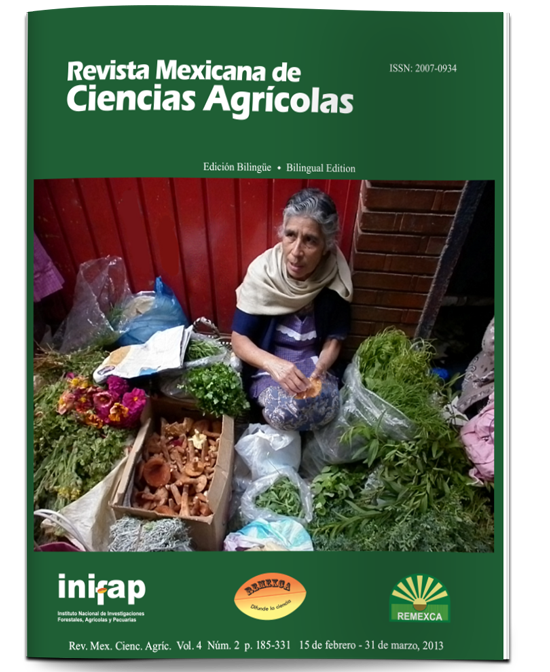Rainfall interception by thorn scrub forest in Atotonilco el Grande, Hidalgo
DOI:
https://doi.org/10.29312/remexca.v4i2.1248Keywords:
Acacia farnesiana (L.) Willd, Eysenhardtia polystachya (Ortega) Sarg., Juniperus f laccida Schltdl. var. Flaccida, canopy, stemflow, interception of rain, throughfallAbstract
Interception of rain is the process by which rainwater modifies its trajectory to be intercepted by the canopy, thereby exerting a marked influence on the pattern of the rain that makes it to the forest floor. Once intercepted, the water is retained by the leaves and branches of trees, including epiphytes, making from now, its trajectory by one or more of these three ways: evaporation, dripping from the top, or flow through the branches to the base of the stem (García, 2006). Interception studies are one of the ways that identify how the current conditions in tree cover, or changes to this structural condition, affect the water balance of a wooded area, either by the application of silvicultural techniques or natural disturbances. In the case of Mexico, this research area has been moderately exploredinparticularinthefieldofecology.Theobjective of this study is to quantify the interception of rain and its variability, measured under canopy in stands whose dominant vegetation is Acacia farnesiana and Juniperus f laccida. In a forest area of the municipality of Atotonilco el Grande, Hidalgo; it was established a research module of 0.64 ha, where 60 rain gauges were placed under the canopy of a forest area representative, formed by different species and degrees of canopy cover and an irregular topography. The study covered the entire rainy seasonof2007.Asaresult,itwasdeterminedanaverage interception of 18.6%, finding a great variability, both between and within rain events. Is reported a statistical relationship between the logarithmic type between interception percentage and total amount of precipitation by event. We found no statistical relationship between the interceptions with the irregular topography. We conclude on the need to extend the analysis to assess the contribution of site variables and vegetation.
Downloads
Downloads
Published
How to Cite
Issue
Section
License
The authors who publish in Revista Mexicana de Ciencias Agrícolas accept the following conditions:
In accordance with copyright laws, Revista Mexicana de Ciencias Agrícolas recognizes and respects the authors’ moral right and ownership of property rights which will be transferred to the journal for dissemination in open access. Invariably, all the authors have to sign a letter of transfer of property rights and of originality of the article to Instituto Nacional de Investigaciones Forestales, Agrícolas y Pecuarias (INIFAP) [National Institute of Forestry, Agricultural and Livestock Research]. The author(s) must pay a fee for the reception of articles before proceeding to editorial review.
All the texts published by Revista Mexicana de Ciencias Agrícolas —with no exception— are distributed under a Creative Commons License Attribution-NonCommercial 4.0 International (CC BY-NC 4.0), which allows third parties to use the publication as long as the work’s authorship and its first publication in this journal are mentioned.
The author(s) can enter into independent and additional contractual agreements for the nonexclusive distribution of the version of the article published in Revista Mexicana de Ciencias Agrícolas (for example include it into an institutional repository or publish it in a book) as long as it is clearly and explicitly indicated that the work was published for the first time in Revista Mexicana de Ciencias Agrícolas.
For all the above, the authors shall send the Letter-transfer of Property Rights for the first publication duly filled in and signed by the author(s). This form must be sent as a PDF file to: revista_atm@yahoo.com.mx; cienciasagricola@inifap.gob.mx; remexca2017@gmail.
This work is licensed under a Creative Commons Attribution-Noncommercial 4.0 International license.



